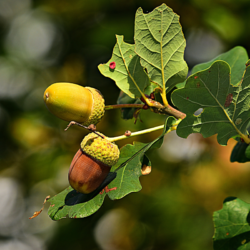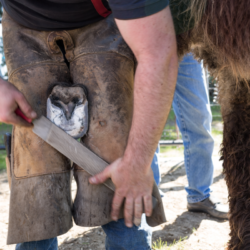Tetanus is a serious bacterial disease that mainly affects horses. The bacterium Clostridium tetani produces a potentially fatal neurotoxin, causing uncontrollable muscle spasms. Horses are particularly susceptible to this infection, which can often be fatal.
What causes this disease?
Tetanus is caused by the bacterium Clostridium tetani. This anaerobic bacterium develops in the absence of oxygen and forms extremely resistant spores. These spores can survive for decades in the environment, particularly in soil, animal excrement and organic debris. Hot, humid conditions favour their proliferation, making certain regions more susceptible to cases of tetanus.
Horses can contract tetanus through various routes:
- Deep wounds: Deep wounds, such as pitchfork bites or cuts, create a favourable environment for spores to germinate.
- Post-surgical: Surgical procedures can introduce spores into an anaerobic environment.
- Post-obstetrical: After foaling, wounds can be an entry point for spores.
- Foal ophthalmitis: Foals can become infected through the umbilical cord.
Once the spores have entered the body, they multiply and produce neurotoxins that migrate along the nerves, reaching the central nervous system. The toxins disrupt neurotransmission, causing severe muscle spasms and convulsions.
What are the symptoms of tetanus?
The incubation period for tetanus generally varies between 7 and 10 days, although it can sometimes take several weeks. The first symptoms are often discreet but quickly become more pronounced.
Early signs of tetanus in horses include:
- Stiffness of gait: The horse moves with difficulty, as if on crutches.
- Reaction to stimulation: Affected horses may sweat excessively and be reluctant to move or retreat.
As the disease progresses, symptoms become more severe:
- Generalised muscle spasms: These spasms affect the horse’s ability to feed and breathe.
- Characteristic signs: Head stretched on the neck, eye sunken in the orbit with prolapse of the third eyelid, and erect ears.
- Hyperesthesia: Excessive sensitivity to touch, sound and light.
If left untreated, death usually occurs within 1 to 3 weeks. Complications include fractures from falls, false swallowing pneumonia and severe breathing difficulties.
How is it diagnosed?
Diagnosis of tetanus is based mainly on observation of the horse’s clinical symptoms and injury history. Characteristic signs such as generalised stiffness, protrusion of the third eyelid and muscle spasms are highly suggestive.
Veterinarians generally diagnose tetanus on the basis of visible symptoms. When the horse shows stiffness and muscle spasms after a recent injury, it is essential to consider tetanus as a possible cause.
In some cases, blood samples may be taken to detect the presence of tetanus toxins. The results of these tests can help confirm the diagnosis, although they are not always necessary to begin treatment.
The best way to prevent tetanus is to vaccinate horses regularly. Vaccines offer effective protection and are recommended for all horses, especially those exposed to frequent injury.
What treatments are available?
The treatment of tetanus in horses is complex and requires rapid, intensive intervention.
The first stage of treatment involves neutralising the toxin circulating in the horse’s body. This is achieved by repeated injections of anti-tetanus serum.
Careful cleaning and disinfection of the wound is crucial to stop toxin production. Antibiotics, particularly penicillin, are administered to destroy the multiplying bacteria.
Affected horses must be placed in a calm, dark environment to limit stimulation. Sedatives, analgesics and muscle relaxants are used to reduce muscle spasms and relieve pain.
Supportive care, such as the administration of fluids and nutrients by infusion or nasogastric tube, is essential to maintain the horse’s general health during convalescence.
What are the means of prevention?
Tetanus prevention is based on two main pillars: hygiene and vaccination. It is essential to clean and disinfect all wounds immediately after they occur. Use oxidising antiseptics to eliminate bacteria and remove any foreign bodies.
Vaccination is the most effective way of preventing tetanus. The vaccination protocol consists of two initial injections one month apart, followed by annual or triennial boosters as recommended. Horses should receive a booster in the event of a wound or before surgery.
Vaccination protocol :
- Primary vaccination: Two injections one month apart.
- Boosters: An annual booster, then every 1 to 3 years depending on the vaccines used.
Foals are vaccinated as follows:
- Foals should receive a series of three doses: at 3, 4 and 6 months.
- Foals from recently vaccinated mares receive their first doses from 3 months of age.
Pregnant mares should be vaccinated 4 to 6 weeks before foaling to protect both dam and foal.Anti-tetanus serum is used in the event of a wound on a horse that has not been properly vaccinated. It is generally given to foals born to unvaccinated dams.
By following these preventive measures, you can significantly reduce the risk of tetanus in your horses and ensure their health and well-being.





